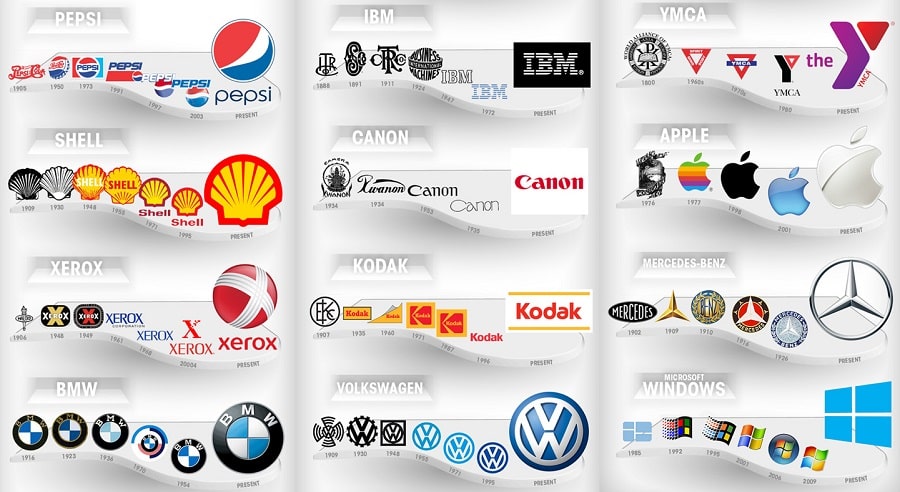
Rebranding – what is it?
Rebranding refers to a complete change in brand content in order to increase sales. There is a transformation in visual style, positioning and customer interaction. In doing so, it is important to maintain the link between the old and new versions to ensure that the company and its products are recognizable.
The difference between rebranding and redesigning
When delving into the intricacies of brand renewal, you’re bound to come across terms like: redesign, repositioning and relaunch. The main thing is not to confuse them with rebranding.
Redesign is a change in external details: packaging, logo, advertising banners, official website.
Repositioning is a major shift in the importance of a brand, changing the way your target audience thinks about it without affecting the product itself.
Both activities can be carried out independently or can be part of rebranding.
Re-launch involves a change in communication with the audience, with a possible change in design and positioning. It differs from rebranding in terms of larger-scale transformation. A striking example of rebranding is Sber, which has maintained continuity with almost absolute newness.
Reasons for rebranding
Rebranding is resorted to in the case of:
- brand obsolescence;
- loss of competitiveness;
- change or emergence of new audience needs;
- decline in sales.
Some of these problems can be solved on a point-by-point basis.

Why rebranding?
The main purpose of a marketing transformation is to increase income, revenue or margins.
Rebranding may be used to achieve the following objectives:
- rejuvenation of the audience;
- differentiation from other products;
- introducing a new market;
- shift of focus.
Measuring rebranding effectiveness
When your goal is to grow profits, revenue or margins, this is how you measure the effectiveness of your rebranding, along with other business metrics. Which ones depend on the product.
If rebranding has not achieved its objective and revenue growth is not seen, the reason should be sought in the chosen metrics. For example, the relaunch effort has depleted the corporate budget and the advertising campaign has reached only a small proportion of potential customers. In this case, biased budgeting is to blame for the failure of the project. Comparisons of performance should be made on a periodic basis: July versus July, the first half of the year versus the first half of the year, and so on.
Stages of rebranding
There are five steps to rebranding:
- an audit of the actual moment.
- Repositioning.
- Redesign.
- definition of a communication strategy.
- promotion.
Thoughts of rebranding usually come to the company’s management when sales deteriorate, products become obsolete, partnerships break down, one-off purchases decline. At this stage, it is necessary to turn to an audit, which will help identify weaknesses.
The company’s brand manager or branding agency will have to:
- fixing the current performance;
- assessment of market position;
- analysis of competing brands;
- Find out the attitudes of the target audience towards your brand.
A thorough marketing analysis will reveal the cause of the deteriorating business performance.
A company preparing to rebrand will definitely need a qualified brand manager. This is a professional familiar with the market and audience, immersed in the business processes, capable of objective validation of contractors’ work, which translates into savings of tens of hours and hundreds of thousands of euros.
